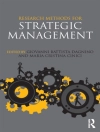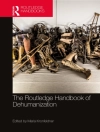Preface
To illustrate the statistical functions and techniques within Excel we have used examples drawn for the world of research. We chose to do this be-cause we believe this will clearly demonstrate some of the facilities within this spreadsheet. However, the statistical power of Excel will allow readers to use this software in a variety of ways, far beyond that of research.
art. It is a science in that it is a body of knowledge which is built on a series of well established rules of applied mathematics. Rigorous statistical analysis is required for quantitative research. There is no argument about how statistical calculations or techniques are to be performed and if the rules are not followed then incorrect answers will most probably be produced. However statistics is also an art that requires a considerable amount of judgement on the part of a practitioner. Judgements and deci-sions have to be made that relate to deciding how a research question should be designed and the role of data and statistics in answering it. There are issues relating to which statistical technique to use, what level of significance to work at, and how the results can be interpreted.
What is also problematic in statistics, which is why it should be regarded as an art, is that there may be disagreements among practitioners about the meaning on these judgements and what answers could be given. It is indeed common to find different researchers taking quite different positions concerning which statistical technique is best to use. Not to mention the fact that the same statistical results can be understood differently.
Excel, with its built in statistical functions is a good tool to use to become familiar with statistics. There are many statistical functions in Excel but this book only addresses the functions required to perform the tasks most often required by researchers. Advanced functions are not used. It is also important to say that Excel has limitations as a statistical package and experienced researchers may well need to use a dedicated statistics package as well as Excel.
This book is not intended to cover all the possible statistical procedures or techniques that can be performed within Excel. The intention is that it will be an introduction to statistics which will facilitate readers to acquire the knowledge to understand the basics and to progress further if he or she so wishes. Furthermore for those who wish to use Excel in more advanced ways there is a list of add-in products in the Appendix.
How to use this book
This book starts with the assumption that little is known about statistics; however it does assume that the reader has some knowledge of Excel.
This book has been written as a tutorial and as such the techniques of statistics are illustrated through many examples. The mathematical equa-tions required for statistical concepts such as the mean and the standard deviation have not been provided as these are easily performed with functions in Excel.
It is hoped that readers will follow the examples by using the techniques and for this reason the data referred to in the book is available to the reader by downloading files from the web.
For beginners to statistics it is preferable to start reading at the beginning i.e. Part 1 and proceed slowly through the book. For those who have a knowledge of statistics the book may be started at Part 2 or at Part 3.
A glossary has been provided at the start of each Part which covers the statistical terms used in that section of the book.
Self tests, assignments and exercises are provided and worked solutions to these are available on request.
Three types of files are available for use with this book. These are ob-tainable at the following website http://www.academic-publishing.org/intro_excel.htm. The first set of files contains data for the worked examples in the book. The second sets of files are Excel files which can be used as templates. The third set of files contains data which is used in the exercises at the end of each part.












